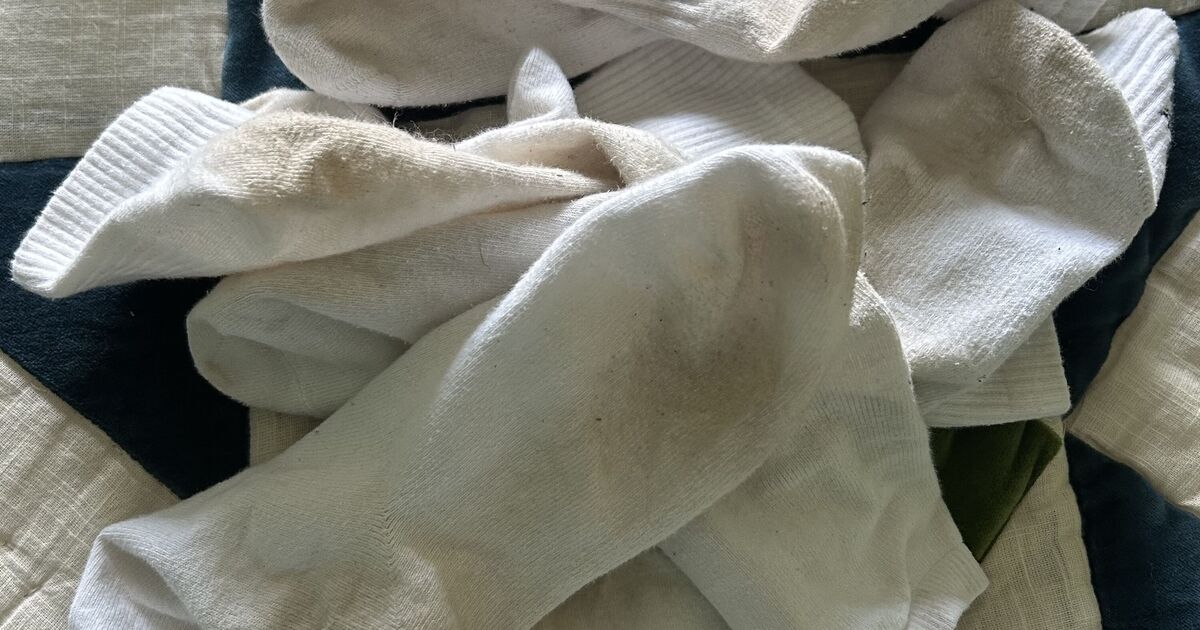
The fisherman aesthetic: anglercore is everywhere – but does it suit me? | Men's fashion
Published: 2025-07-08 08:19:52 | Views: 8
It was, in the end, a fashion trend awaiting better weather. Now that summer is here, the “fisherman aesthetic”, long heralded as one of the key looks for 2025, has finally arrived. Or has it? Standing on the beach at Hastings, with a stiff wind blowing into my face, I am adding one layer of fishing gear on top of another while holding my fisherman’s hat on my head, gently overheating under a hazy sky.
I’m not sure this is what Vogue had in mind when it predicted that “the menswear customer will take to water, embracing the ‘fisherman aesthetic’” earlier this year. I can’t see anyone else on the beach embracing it. Then again, I can’t see anyone else on the beach.
These early predictions have now hardened into a mantra. “What started as a humble nod to weathered knit sweaters, sturdy boots and utilitarian outerwear has turned into a full-fledged movement,” declared lifestyle website The Velvet Runway. “Practical gear like rainboots, work jackets and canvas totes abound,” said Cosmopolitan. “Less yacht club, more fishing dock,” said InStyle. By the end of March, Veranda magazine felt able to confirm that “the fisherman aesthetic now reigns supreme in both fashion and interior design”.
However, when you investigate the origins of fisherman chic, it quickly becomes clear there are two main branches to the trend. The first is more of a general nautical vibe than a uniform: striped tops, baggy khakis, boat shoes, cable knits. The Daily Mail cited “the naval-inspired looks on the recent runways of Tommy Hilfiger, Ralph Lauren and Proenza Schouler” as sources for the trend, said to be an offshoot of the “coastal grandma” look (no, me neither) from a few years ago, which was largely confined to women’s fashion. It’s beach-friendly, casual and understated (Diane Keaton in the film Something’s Gotta Give is apparently an inspiration for it). People dedicated to showing you how to get the look on TikTok are at pains to point out that you may well own most of the stuff already.
The second strand, what might be termed the male version of fisherman chic, comes at it from another direction, specifically fly-fishing. New York menswear boutiques such as Blue in Green have been selling out of the multi-pocketed fishing vests favoured by anglers. According to the Washington Post, outfitters catering to fly-fishermen have recently seen revenue boosted by sales to men who don’t fish, but are keen to adopt a look the paper dubbed “anglercore”.
Where these traditional outfitters might once have been pleasantly bewildered by all the extra online traffic, the industry is catching on. Streetwear brands and angling companies have begun collaborating on outdoor clothing lines. Last autumn, the Canadian rapper Drake, through his Nike brand Nocta, produced an actual fly-fishing reel in collaboration with Abel Reels. Where the womenswear strand of fisherman chic seems to be more about inspiration – using a nautical theme as a jumping-off point – the menswear seems more like direct occupational appropriation – literally buying the stuff real fishermen use.
As the stylist and fashion writer Peter Bevan sees it, the authenticity of the gear is the point of this angler aesthetic. “If, say, Gucci did a fishing jacket, and they bought that one, it’s almost like them faking it,” he says. “When it comes to workwear, men just like to buy into the proper brands that do it and the real type of workwear, rather than anything that feels manufactured.”
There is an inverted aesthetic at work: in most cases the clothing is purely functional; it has no style per se, only a kind of perceived integrity. The Japanese workwear brand Montbell uses the slogan “Function is beauty”, which is one way of saying: this stuff looks this way for a reason.
Fly-fishing vests, for example, are often cropped weirdly short, but that’s not a style – it’s so the pockets don’t get wet when you’re standing up to your ribcage in a river. And they aren’t covered in pockets because pockets are cool; it’s because anglers need storage for all the kit they carry into the water.
“You’re using floats, you might use sinks, you’ve got spools of nylon,” says Mark Bowler, editor of Fly Fishing & Fly Tying magazine. “You’ve got a dry fly box, you’ve got a nymph box, you’ve got a lure box. You’ll have scissors, forceps, nips. You’ve got numerous tools, almost medical, dangling off the waistcoat. You might have a hook retriever in there …”
There is an obvious irony to this extreme functionality, in that few, if any, of the influencers wearing fly-fishing vests on the streets of Brooklyn will ever use the garment for its intended purpose, or even know what that is.
“… You’ve got leaders, sight indicators, magnifiers, your sandwiches,” says Bowler. “You might have a water bottle in the back of it, because it’s got pockets at the back. There might be scales in there for weighing fish, or tungsten putty.”
On the beach in Hastings, I am having a certain amount of trouble rationalising the two branches of the fisherman aesthetic. My jacket would suit weather more foul than I’m likely to encounter all year. Meanwhile, the Schöffel fly-fishing shirt I’m wearing looks like something Nigel Farage might go canvassing in, only it’s made of a lightweight, quick-drying polyester. Who knows? Maybe his is too.
There is, of course, something immediately satisfying about wearing a technical garment; it bestows a certain sense of competence and expertise all by itself. The Wensum fly vest by Farlows – a British outfitter established in 1840 – has four capacious pockets on the front and a swatch of shearling wool just below the right shoulder which, it turns out, is for hanging your flies on. The Ayacucho Trailblazer vest has no fewer than 10 pockets, and also – somehow – repels mosquitoes.
“Some include a life vest as well,” says Bowler. “So if you fall in, the waistcoat explodes.”
This is a lot of technical overkill for a fashionable piece of streetwear. Even without the capacity for inflation, it would be difficult to find a use for 10 pockets on dry land. But that, I know, is not the point – these things are fashionable because they are technical.
In many ways, we have been here before. Workwear, with its utilitarian shape and built-in sense of purpose, is a perennial fashion favourite. Brands such as Carhartt and Dickies have made a fortune selling blue-collar style to men who can’t change a plug. And the fisherman aesthetic is nothing new: the Aran knit was Vogue’s celebrated jumper of 2015 and fisherman’s scarves, hats and oilskins were big items in 2016. GQ declared fly-fishing “the next wave in menswear” back in 2019.
Bowler recalls an even earlier collision between fly-fishing and fashion, when Aerosmith frontman Steven Tyler wore feathers in his hair during a stint as an American Idol judge. The long rooster feathers he chose were also used by the fly-tying industry. “Everybody wanted them,” says Bowler. “And we couldn’t get them because all the suppliers were being rung up by hairdressers saying, ‘Look, we’ll pay anything for them.’”
News of the current fashion for angling gear has also reached Bowler, although he is not exactly persuaded. He doesn’t see a future in which he treats angling gear as a look to be seen in. “You know what, Tim? When I go fishing, the last thing I want to see is another person.”
However, he has noticed that even the most technical gear is becoming more fashion-conscious. “You’d find it hard to look stylish in waders,” he says. “But even waders are becoming more fitted, in lighter materials. They used to be like PVC with wellies on the end, and now they’re kind of a fitted, breathable material. You actually attach boots to the bottom of them and they have a belt, you know, which gives you a bit more shape.”
Indeed outfitters, including Montbell, produce chest-high fishing waders you might feasibly wear to a gallery opening. Another Japanese clothing company, South2 West8, is known for producing stylish gear that will also serve you well on the river. Although if I owned a £358 fly vest (currently on sale at £250), I don’t think I’d want to get it wet, especially when you can buy a “real” vest from an angling supplier for as little as £25.
Could an interest in the clothes, as the Washington Post dares to suggest, eventually foster a corresponding interest in fly-fishing? Could the gear lead the hipsters to the sport? Bowler has seen nothing to support that notion. He acknowledges that while angling has a higher profile these days (thanks, in part, to Paul Whitehouse and Bob Mortimer fishing on television), an interest in fly-fishing is not the same thing as fly-fishing. “The number of fishermen – it’s not booming,” he says. “It’s dwindling, in fact.”
It’s the same story on the sea. In the 1980s, Hastings boasted a fishing fleet of more than 40 vessels, but the ones I’m using as a backdrop for my fashion shoot are reputedly among the last five or six still regularly working. It would be a shame if, in 10 years’ time, all that people know about fishing is the clothes.
While the nautical movement and the fisherman aesthetic may be two distinct trends, independent and coincidental, they do have one thing in common, and it ain’t fishing. Both looks are essentially about wealth. Fly-fishing chic, with its checked shirts, waxed Barbour jackets and old-fashioned gear, mimics the relaxed vibe of the landed gentry. Like the coastal grandma trend that is said to have spawned it, the fisherman aesthetic is really an attempt to appropriate moneyed understatement.
“I think fashion is generally obsessed with wealth recently,” says Bevan. “There was stealth wealth, the old-money aesthetic, quiet luxury, equestrian-inspired womenswear collections. It feels like one side of this is an extension of that.”
Essentially the two looks project the same vibe: tell me you’re rich without telling me you’re rich, even though you’re not actually rich.
Even that isn’t the whole story: walking back from the beach, through Hastings Old Town, I am suddenly struck by the number of men my age – tourists, mostly – wearing fly-fishing vests. And they’re not doing it ironically or because they genuinely aspire to the angling life, or because they’re trying to project quiet luxury.
They’re doing it because they like pockets.
Source link







